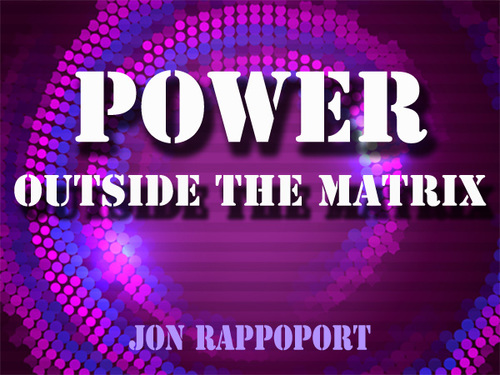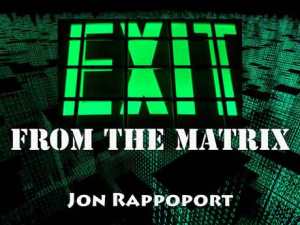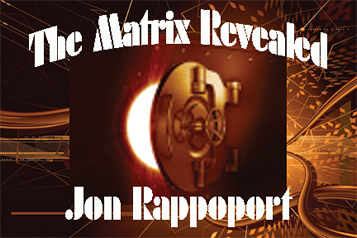The creative center of the world
by Jon Rappoport
April 16, 2014
“After the final no there comes a yes and on that yes the future of the world hangs.” — Wallace Stevens
What would happen if the world were enveloped by art? And if we were the artists? And if we owed nothing to any hierarchy or external authority?
Is it possible that an outpouring of art, creation, invention, coming from millions and millions of people, would bring about a sea change in the conducting of human affairs? Would such a tide affect the obsession to wage war?
Magic is not about arcane crests and codes and symbols. All those symbols and seals are just a way of invoking mystery and a front of supposed privilege.
People still accept landscapes painted by a priesthood and they call those landscapes Spiritual, and hope these puerile inventions will somehow take them to bliss and final enlightenment.
In other words, people want to exist inside a phony masterpiece designed by a class of authoritarians.
In a nutshell, that’s the story of this planet, and it always was.
I’ve been writing about the creative life for some time. For me, that life is a far cry from the pallid oatmeal of spiritual movements where the essence of things is “peace through avoidance”—an attempt to substitute one form of politeness for another, one form of sleep for another.
When people strip away all the hogwash that has been passed off as spiritual enlightenment for centuries, what they are left with—if they can feel it—is creative fire. That fire IS the spiritual force. IS the real thing. Finally.
Most people don’t want to travel to that grand arena. They have been trained like pets by some sector of this society to be good little girls and boys.
Art (creation/magic) is a word that should be oceanic. It should shake and blow apart the foul smug boredom of the soul.
Art is about what the individual invents when he is on fire and doesn’t care about concealing it. It’s about what the individual does when he has thrown off the false front that is slowly strangling him.
Art is about the end of mindless postponement. It’s about what happens when you burn up the pretty and petty little obsessions. It’s about emerging from the empty suit and empty machine of society that goes around and around and sucks away the vital bloodstream.
Art is about destroying the old order and the new order and the present order, with a glance.
It’s about spearing the old apple on the point of a glittering sword and opening up the whole rotting crust that has attached itself to the tree of life.
It’s about shrugging off the fake harmony of the living dead.
When this kind of creation overtakes the world, only then does the world become what it should be.
On an individual level, boredom has much the same effect as concrete does in the landscape: it covers more and more territory, and once you lay it down it doesn’t usually come up.
If you look closely, you can see people are walking around with big signs on their necks: I’M BORED.
They pretend they’re not.
But they’re bored silly. They’re driving themselves cuckoo.
Creation of deep desire with great fire, as fact in the world, IS the definition of magic. That’s what magic is.
The secret of the labyrinth is this: as long as masses of people are trapped in their own acquiescence to a fictional spiritual and psychological existence, in which they are the passive receivers of “wisdom and direction,” all is lost.
No matter how many liberation movements arise, no matter what degree of success they achieve, in the long run the winners (or their descendants) always fall back into a trance state in the center of their consciousness. They look for answers to come in to them from an external source—and if they can’t find a ready-made source, they will subconsciously invent one.
The whole proposition comes back to: shall we be audience only, or creators? Shall we find our spiritual destinies through obedience to “art” made with mind control as the motive, or shall we embark on a much greater adventure, along a road where what WE individually create is the hallmark and the revelation of our power?
Do we take the magic in our hands, or do we cede it to those who, by default, become our masters?
Suppose the divide between actors and audience in our society underwent a spontaneous revolution?
Art is not a little sandbox. Fueled by liberated imagination, it is THE revolution the psyche has been asking for.
When one acts long enough, he realizes that the world could really be a stage, and the sound and fury would, in fact, signify something vital and deep.
When one paints long enough, he realizes this world and all the universe are but one painting out of an infinity of possible paintings.
When one writes long enough, he realizes that so-called history is but one story—and many other (better) stories could be told.
When one plays music long enough, he realizes that emotion can be lifted out of petty concerns into realms where feeling becomes vast triumph.
When one builds long enough, he realizes that the physical structure of civilization can be led out of mere functionality into dazzling new spaces.
This is where we could go. And the stars in space would pale by comparison.
At some point in such a vision, a critical mass would be reached. People, viewing an explosion of art, would themselves catch the thread and begin to inhabit their own dreams. The contagion would take hold. What was formerly viewed as an elitist activity would spill over all boundaries.
And then?
People at large would realize the connection between spirit and creative action. The propaganda machines of the world, aimed at control of the deadened masses of populations, would blow gaskets and become obsolete. Drowned in a sea of creativity.
That would be the answer to the question, “What do I do after I see through the illusions of the puppet masters?”
Art unchained becomes titanic. It can spread out over the landscape and take it over. It can spawn and proliferate more art, until the emotional content of daily experience becomes transformed. Until we all live at a wider and deeper level.
There are artists like Stravinsky, like Gaudi, like the composer Edgar Varese, like the often-reviled American writer Henry Miller, like Walt Whitman (who has been grotesquely co-opted into a Norman Rockwell-like prefect), like the several great Mexican muralists—Orozco, Rivera, Siqueiros—all of whom transmit an oceanic quality.
As in, The Flood.
There is a fear that, if such artists were unleashed to produce their work on a grand scale, they would indeed take over the world.
Our world, contrary to all consensus, is meant to be revolutionized by art, by imagination, right down to its core.
That this has not happened for the best is no sign that the process is irrelevant. It is only a testament to the collective resistance.
Who knows how many such revolutions have been shunted aside and rejected, in favor of the consensus shape we now think of as central and eternal?
We are living in a default structure, the one that has been left over after all the prior revolutions have been put to sleep.
But creation is not neutral.
It flows out into the atmosphere with all its subjective force.
Were you to embark on a uniquely passionate course of creation, enlarging the scope at every turn, you would launch out of the realm of the push-pull humdrum Earthside disintegrating disaster…..and into the realm of what you INVENT….
Magic.
As more and more of us moved forward in this way, THAT would become the transformation we have been unconsciously hoping for. That would relentlessly make society over. That would eventually shatter the influence of all cartels and monopolies of physical and emotional and mental and spiritual experience. Not because we wished it were so, but because we made it happen.
Jon Rappoport
The author of three explosive collections, THE MATRIX REVEALED, EXIT FROM THE MATRIX, and POWER OUTSIDE THE MATRIX, Jon was a candidate for a US Congressional seat in the 29th District of California. He maintains a consulting practice for private clients, the purpose of which is the expansion of personal creative power. Nominated for a Pulitzer Prize, he has worked as an investigative reporter for 30 years, writing articles on politics, medicine, and health for CBS Healthwatch, LA Weekly, Spin Magazine, Stern, and other newspapers and magazines in the US and Europe. Jon has delivered lectures and seminars on global politics, health, logic, and creative power to audiences around the world. You can sign up for his free emails at www.nomorefakenews.com


